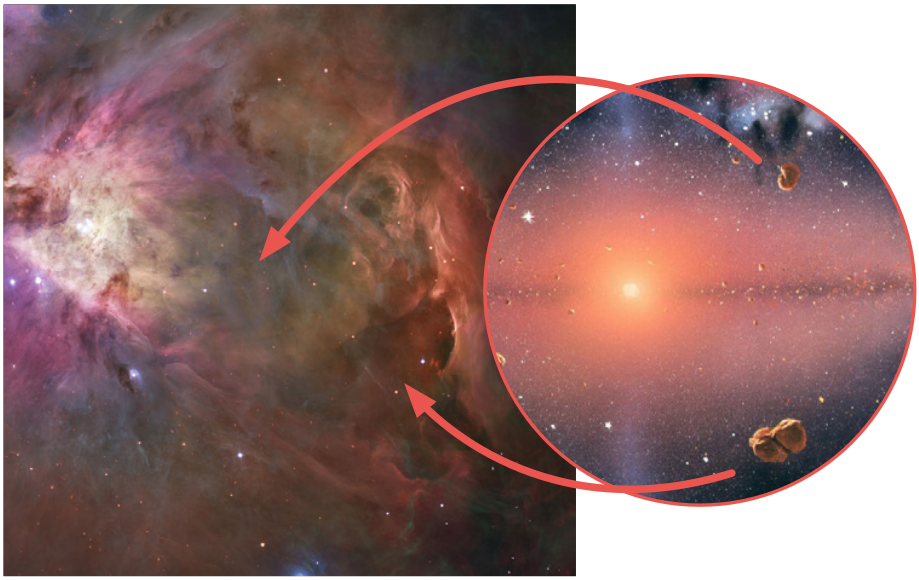Astrophysical Research Challenge 1:
Time-lapse astronomy – reconstructing 13.8 billion years from snapshots.

The complex dynamical transport of gas, dust, and solids is determined by flows of both mass and energy. These flows typically happen over long timescales. For example, galaxy evolution spans more than 13.5 billion years, as evidenced by the recently discovered “cosmic dawn galaxies” seen by the JWST as it was just 300 million years after the Big Bang. The long duration implies that changes in individual galaxies cannot be followed in real-time. Therefore, the time evolution and kinematics need to be puzzled together statistically by observing a large number of galaxies, many different environments within galaxies, multiple sites of star formation, and planet-forming circumstellar discs. Using our physics knowledge, we will bring them into a logical temporal sequence of evolution, i.e., into a “time-lapse movie” of our dynamic Universe. The “plot” of the movie emerges from the activities of the “key players” (observable phenomena), influenced by a series of rapid events (ARC2), set against a scenery shaped by cosmology (ARC3). In order to reconstruct this movie, we combine individual snapshots from astronomical observations probing different parts of the electromagnetic spectrum with the explanatory power of numerical simulations and theory, assisted by AI and ML.

